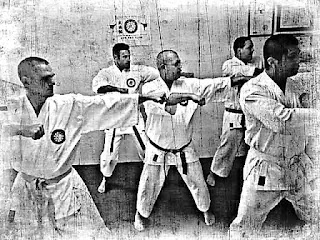By Phillip Starr
Why should we bother to learn forms? Aren't they just antiquated relics from the past? Do they have any use in the 21st Century? Doesn't seem like memorizing a bunch of “dance steps” has any application in the “real world”... They're just traditions of very old cultures, aren't they?
And so on. They're legitimate questions, however, and they demand answers. Turning our noses up at those who ask these kinds of questions doesn't help the matter; it only makes it worse.
Forms, per se, originated in pre-historic times when warriors/hunters found certain techniques and footwork that worked for them. They would practice them over and over in an effort to remember and improve on them. They would link together several such methods to ensure that they could be remembered and then passed this information on to the the younger generation who, in time, would expand upon the foundation(s) that they'd been given by their father/teacher.
In time, as civilizations advanced and people grouped together and built more secure places to live, the evolution of effective fighting methods continued. Forms for different types of situations (such as fighting on open ground, in small alleys, on rocky ground or even in boats, on stairs, and so on) were developed and passed on to succeeding generations. However, as they evolved they included more than just several simple series of techniques that were committed to memory. Our martial arts ancestors weren't stupid and most of them had considerably more experience in what some like to call “real world combat” than we'll ever imagine.
Hand-to-hand fighting hasn't changed much over time. People fought the same way 500 years ago that they do today. In many areas there wasn't much in the way of law and order, and you depended largely upon yourself for survival. You couldn't call 911 for help. And much as some contemporary pugilists like to pat themselves on the back for practicing and even competing in forms of “real world fighting”, it's well to remember that there were no rounds, no referees, no throwing in the towel if you got a bloody nose, no trophies or prize money...and no rules. There was only survival.
“But people don't fight like that”, many modern fighters argue. “It's not realistic to practice memorized forms.” They misunderstand. No, you're not supposed to fight as though you're doing a form! To think otherwise is silly and dangerous. And that's NOT what forms are meant to teach and develop, either. Forms are largely intended to teach various principles of striking, body shifting and stepping, maintaining balance, and so on...everything that is critical in developing real fighting skill. Weight shifting, distance, timing...these are all of primary importance in a life and death skirmish and such things are exactly what our forms teach us; they provide us with an organized routine for developing skill in these things and they show us exactly how they are to be done.
Karate, kung-fu, and taekwondo are not fixed, dead postures. Combat is ever-changing, dynamic, and fluid. Our ancestors knew that better than most of us ever will. At the same time, combat is not a game wherein both participants go home at the end of the engagement. Our ancestors wanted to preserve what worked for them. And they wrote it all down in what we now know as forms.























No comments:
Post a Comment